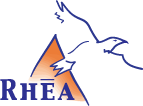
Our cultural resources professionals provide a full range of archaeological, historical, and geophysical services for transportation and development projects as well as heritage organizations and academic researchers.
Cultural Resources Management
Our team meets the Secretary of the Interior’s standards for professional archaeologists and architectural historians and offer a range of cultural resource services including:
Archaeological + Historic Mapping
GIS, Including Viewshed Analysis for Section 4(f)
Phase I – III Archaeological Survey
Architectural Survey + Historic Resource Survey Forms (HRSF)
Archival Research
National Register of Historic Places Nominations
Cemetery Delineation
Public Outreach, Stakeholder Consultation, + Communications
One of our particular areas of expertise is archaeological geophysics. We have decades of experience applying non-destructive, non-intrusive geophysical methods to archaeological sites including historic battlefields, farmsteads, cemeteries, and pre-contact settlements. Archaeological geophysics can help to identify features before breaking ground, helping archaeologists to plan their excavations and developers to avoid sensitive cultural resources. For many of our surveys, we deploy multiple methods to better identify subtle features that might be missed using just one. Our methods include:
Ground-penetrating radar (GPR)
Magnetometry & Magnetic Gradiometry
Conductivity & Magnetic Susceptibility Mapping
RM-15 Resistance Mapping
Deep Metal Detection
Check out some of our work and learn how Rhea can keep your project in compliance with state and federal historic preservation regulations.
Road Connectors in a High Traffic Area
Rhea is providing surveying, environmental, geotechnical, and archaeological support for a major road connector project in Moon, Pennsylvania.
Phase I Historic Architectural + Archaeological Surveys
To determine if any National Historic Preservation Act sites would be affected, Rhea was contracted to complete architectural and archaeological surveys of Parsons, WV for United States Army Corp of Engineers prior to entering into a cost-share agreement for flood reduction measures.
Archaeological Geophysics at Two Historic Cemeteries
Rhea’s archaeological geophysics team used non-invasive methods to locate and map over 2,800 mostly unmarked graves at two historic cemeteries in Alexandria, Virginia.
Allegheny County Airport Cultural Resource Survey Update
Rhea’s team updated existing architectural surveys for the Allegheny County Airport Historic District and evaluated 11 buildings that had recently passed the age threshold for inclusion in the District.
Morlunda Tower Site Archaeological Geophysics
A new cell tower was proposed at a site in Lewisburg, WV that was thought to be near an unmarked historic burial ground. Because the exact location of the graves was unknown, archaeological investigation was required before ground-disturbing construction activities could take place.
Phase II Archaeological Investigation
Rhea was contracted to complete a Phase II Archaeological Investigation of the site to determine the National Register of Historic Places (NRHP) eligibility. This fast-paced project required the completion of the fieldwork in under three months.
Morrow Archaeological Geophysics
The route of a planned utility line passes through a known archaeological complex associated with the National Register of Historic Places listed Stubbs Earthworks site. The Ohio State Historic Preservation Office requested that non-invasive geophysical surveys be conducted prior to construction activities.
Civil War UXO Survey
The scope of the investigation was to apply geophysical technology at 19 proposed boring locations to attempt to positively identify subsurface features of interest, especially any unexploded ordnance (UXO) that might still have been in the ground from the Civil War, but also any other metallic obstructions that could be present.








